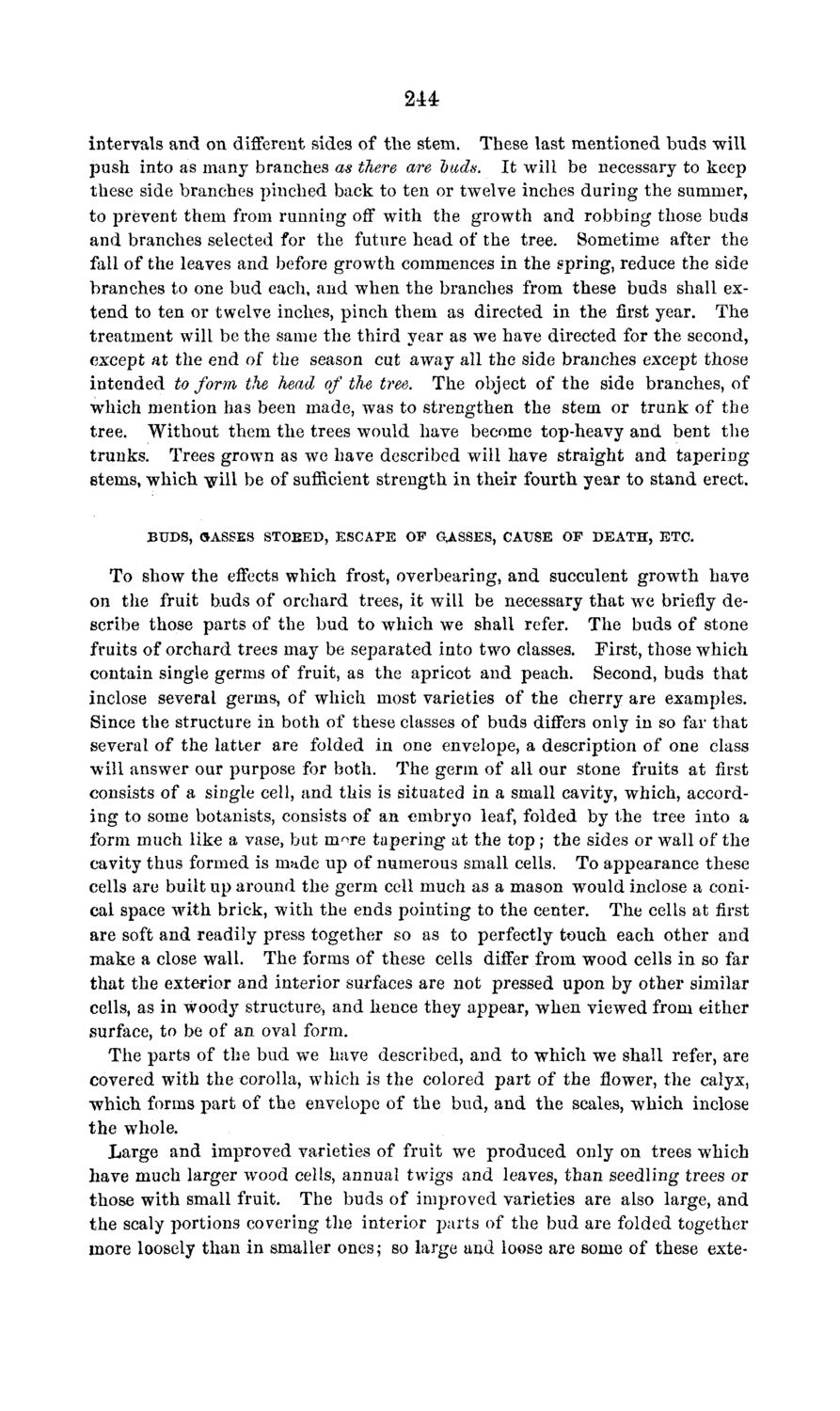| |
| |
Caption: Board of Trustees Minutes - 1869
This is a reduced-resolution page image for fast online browsing.

EXTRACTED TEXT FROM PAGE:
2U intervals and on different sides of the stem. These last mentioned buds will push into as many branches as there are buds. It will be necessary to keep these side branches pinched back to ten or twelve inches during the summer, to prevent them from running off with the growth and robbing those buds and branches selected for the future head of the tree. Sometime after the fall of the leaves and before growth commences in the spring, reduce the side branches to one bud each, and when the branches from these buds shall extend to ten or twelve inches, pinch them as directed in the first year. The treatment will be the same the third year as we have directed for the second, except at the end of the season cut away all the side branches except those intended to form the head of the tree. The object of the side branches, of which mention has been made, was to strengthen the stem or t r u n k of the tree. Without them t h e trees would have become top-heavy and bent t h e trunks. Trees grown as we have described will have straight and tapering stems, which will be of sufficient strength in their fourth year to stand erect. BUDS, MASSES STOEED, ESCAPE OF GASSES, CAUSE OF DEATH, ETC. To show the effects which frost, overbearing, and succulent growth have on the fruit buds of orchard trees, it will be necessary that we briefly describe those parts of the bud to which we shall refer. The buds of stone fruits of orchard trees may be separated into two classes. First, those which contain single germs of fruit, as the apricot and peach. Second, buds t h a t inclose several germs, of which most varieties of the cherry are examples. Since the structure in both of these classes of buds differs only in so far t h a t several of the latter are folded in one envelope, a description of one class will answer our purpose for both. The germ of all our stone fruits a t first consists of a single ceil, and this is situated in a small cavity, which, according to some botanists, consists of an embryo leaf, folded by the tree into a form much like a vase, but m^re tapering at the t o p ; the sides or wall of the cavity thus formed is made up of numerous small cells. To appearance these cells are built up around the germ cell much as a mason would inclose a conical space with brick, with the ends pointing to the center. The cells at first are soft and readily press together so as to perfectly touch each other and make a close wall. The forms of these cells differ from wood cells in so far t h a t the exterior and interior surfaces are not pressed upon by other similar cells, as in woody structure, and hence they appear, when viewed from either surface, to be of an oval form. The parts of the bud we have described, and to which we shall refer, are covered with the corolla, which is the colored p a r t of the flower, the calyx, which forms part of the envelope of t h e bud, and the scales, which inclose t h e whole. Large and improved varieties of fruit we produced only on trees which have much larger wood cells, annual twigs and leaves, than seedling trees or those with small fruit. The buds of improved varieties are also large, and t h e scaly portions covering the interior parts of the bud are folded together more loosely than in smaller ones; so large and loose are some of these exte-
| |